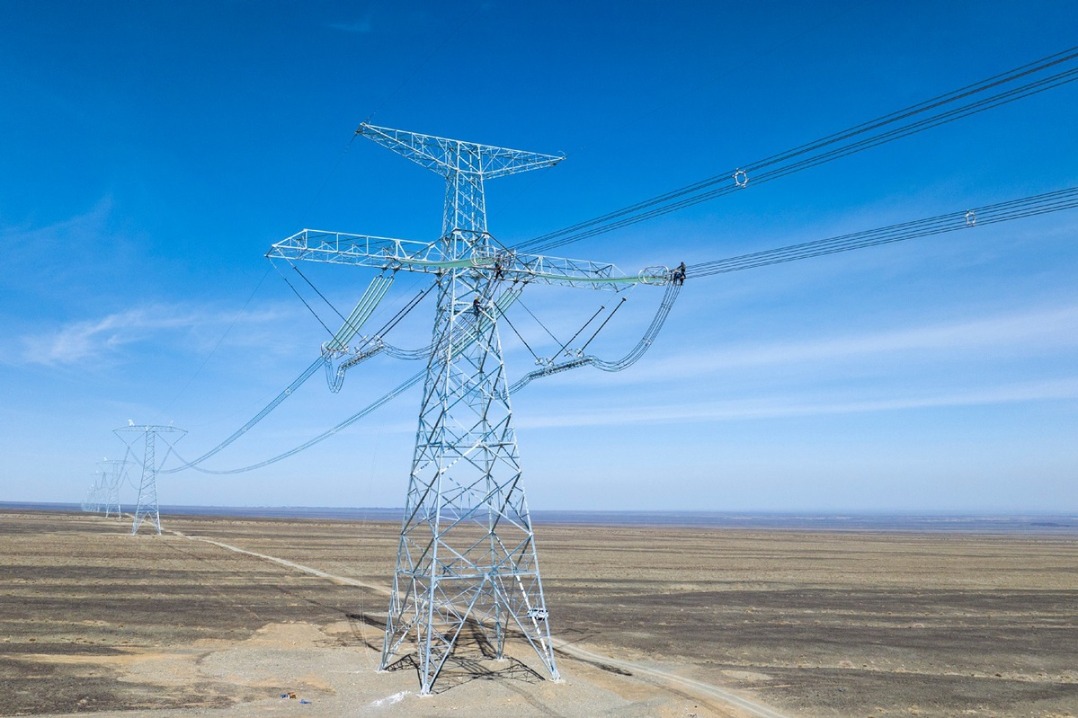Game changer


The Belt and Road Initiative has prompted a qualitative shift in China's cooperation with Ethiopia
China's approach to overseas investment has changed dramatically since the launch of the Belt and Road Initiative, which has become a key driver of China's global investment strategy, particularly in developing countries. By 2018, China had emerged as the world's second-largest outward direct investment source, after Japan, with investments totaling $143 billion and a cumulative stock of $1.98 trillion, a 66-fold increase since 2002. While Asia remains the top destination for Chinese ODI, members of the Association of Southeast Asian Nations have seen the fastest growth, reflecting the BRI's focus on regional connectivity. The initiative has institutionalized China's overseas investments, creating structured financing channels for infrastructure and industrial projects in partner countries.
The BRI has reshaped China's investment priorities. The BRI, moving beyond traditional trade, maneuverers ODI into large-scale and long-term partnerships and from restricted to strategic investments in countries of the Global South. While Southeast Asia dominates China's ODI, the BRI has diversified its focus to Africa, with Ethiopia to be a key beneficiary.
China and Ethiopia have an established tradition of economic and diplomatic engagement, with key agreements dating back to 1996, covering areas of trade, economic and technological cooperation. However, the most significant shift occurred in 2017 when the two countries established a Comprehensive Strategic Cooperative Partnership, followed by Ethiopia's signing of a memorandum of understanding on the BRI in 2018.
The 2017 Comprehensive Strategic Cooperative Partnership and Ethiopia's 2018 BRI MoU marked a qualitative shift in the dynamics of China-Ethiopia cooperation.
First, the BRI has provided a structured platform for cooperation beyond ad hoc agreements, integrating Ethiopia into China's global infrastructure and trade networks. Second, BRI-linked projects, such as the Addis Ababa-Djibouti Railway, industrial parks and others, have been accelerated under a more secure partnership framework. Third, unlike earlier trade-focused deals, the BRI encourages cooperation in the digital economy, green energy and manufacturing, areas not prominently covered in pre-2017 agreements.
The BRI in Ethiopia is a catalyst for deeper cooperation. It has not replaced earlier agreements. However, it elevated their implementation under a more ambitious, strategic vision. While pre-BRI cooperation was piecemeal and reactive, the BRI has provided a systematic mechanism for sustained, high-impact collaboration. Evidence shows that the BRI has enhanced the quality of China-Ethiopia cooperation by fostering long-term, multidimensional engagement.
Prior to the BRI, Chinese investments, while substantial, were relatively fragmented, spanning a wide array of sectors without a clear strategic concentration. However, the BRI period saw not only a surge in the total capital inflows but also a deliberate reorientation toward sectors that align with the initiative's core objectives of infrastructure development, industrial capacity expansion and economic integration.
One of the most striking features of this shift is the overwhelming dominance of the manufacturing sector. This suggests that China views Ethiopia as a hub for industrial production, likely due to its natural resources potential, competitive labor costs and preferential trade agreements, reinforcing Ethiopia's role in China's global supply chain strategy. The establishment of industrial parks and large-scale manufacturing facilities reflects a long-term commitment to transforming Ethiopia into a manufacturing base for Chinese companies.
Beyond manufacturing, a strategic emphasis has been placed on construction and infrastructure-related investments, particularly in contracting and water well drilling. This aligns with the BRI's focus on hard infrastructure as a means of enhancing connectivity and facilitating trade. The significant capital allocated to these areas suggests that Chinese financing was not merely about short-term economic returns but also about laying the groundwork for sustained economic engagement. Infrastructure projects, often financed through concessional loans, have enabled Ethiopia to address critical gaps in its development while simultaneously creating opportunities for Chinese companies to secure lucrative contracts.
Rather than dispersing funds across disparate areas, Belt and Road investments have become more targeted, reflecting a deeper and more structured form of economic cooperation. This evolution suggests that the BRI framework was not merely an expansion of existing financial flows but a deliberate reengineering of investment priorities to serve both Ethiopia's industrialization ambitions and China's global investment strategy.
The BRI has elevated China's cooperation with developing countries by scaling up investments in critical sectors through railways and renewable energy. It provides alternatives to Western-dominated financing through the Export-Import Bank of China loans, and further, fosters deeper economic integration beyond raw material exports. The BRI has deepened strategic infrastructure financing. The shift toward transport and energy aligns with the BRI's goal of enhancing trade routes and energy security, directly supporting Ethiopia's economic growth.
The author is former commissioner of the Federal Civil Service, director of the Civil Service Reform Program in Ethiopia, and a deputy CEO of Ethiopian Sugar Corporation. The author contributed this article to China Watch, a think tank powered by China Daily.
Contact the editor at editor@chinawatch.cn.


































